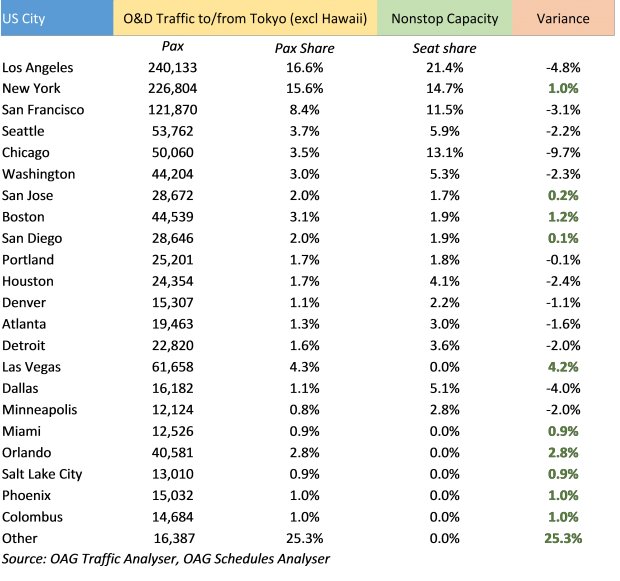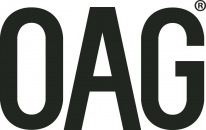A ‘blank canvas’ look at US-Tokyo flights

US regulators have indicated their intention to use the availability of slots at Tokyo’s Haneda Airport to take a fresh look at air service to Tokyo.
Having recently examined the increase in transpacific non-stop air services and the implications for Tokyo’s Narita Airport as a connecting point, here at OAG we wondered how well airline capacity between the US and Tokyo is matched with the number of passengers wanting to travel between Tokyo and the US. Any mismatch surely helps point the US regulators to where capacity could be adjusted to meet current needs.
Comparing available non-stop capacity by US city with O&D traffic between the mainland US and Tokyo, the most striking fact is how the historic availability of capacity has influenced how and where people choose to fly. In practice this means that the largest traffic flows are to and from the US cities which have the most capacity to the US. We shouldn’t be surprised.
Opportunities for changes in the level of air service lie in the mismatches between traffic and capacity. The West Coast airports clearly have more than their share of capacity, although this has enabled them to build connecting flows which means more secondary US cities are able to have one-stop services to Tokyo, and connecting traffic contributes to non-stop service viability.
Top of the list for more non-stop capacity might be Las Vegas which currently has a limited non-stop operation by Delta alongside the largest indirect traffic flow to Tokyo, numbering almost 55,000 passengers last year.
After that, a bit more capacity to the East Coast might be helpful, and even some sort of operation to Florida. Florida has the largest unserved routes to Tokyo and last year there were 53,000 passengers who flew to or from either Miami or Orlando and Tokyo via another airport. At 12,000km a Florida route would surely be just right for a Dreamliner.
Aside from a few new routes, the problem for regulators looking to change the mix of airlines and routes operating between Tokyo and the US is the long ‘tail’ of cities places where passengers originate in the US, few of which will justify commercial scheduled air service in the foreseeable future. The reality will be one-stop service for many travellers for some years to come.
To find out more about the West Coast and it’s future of transpacific services, download our latest report.


